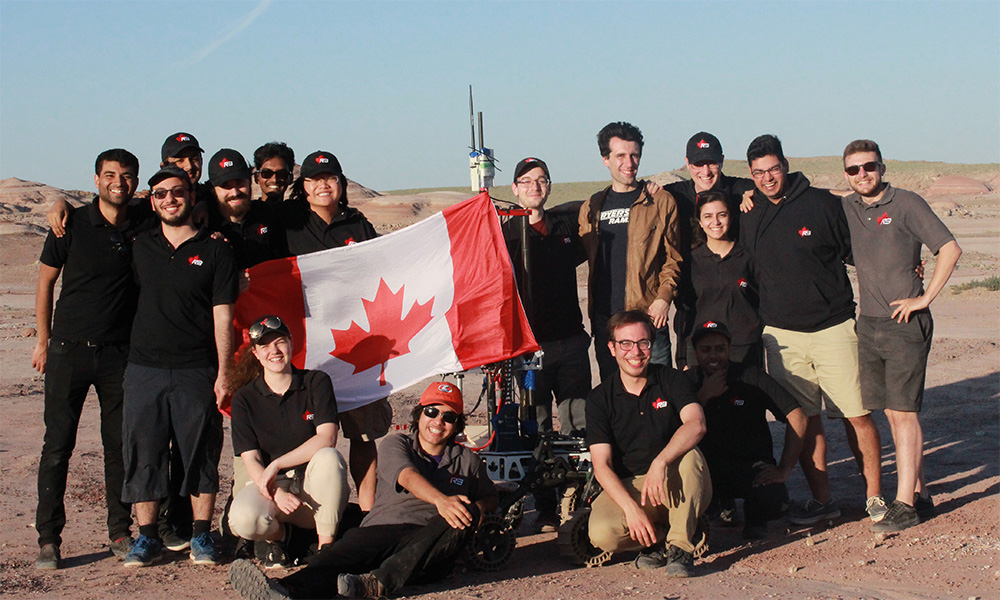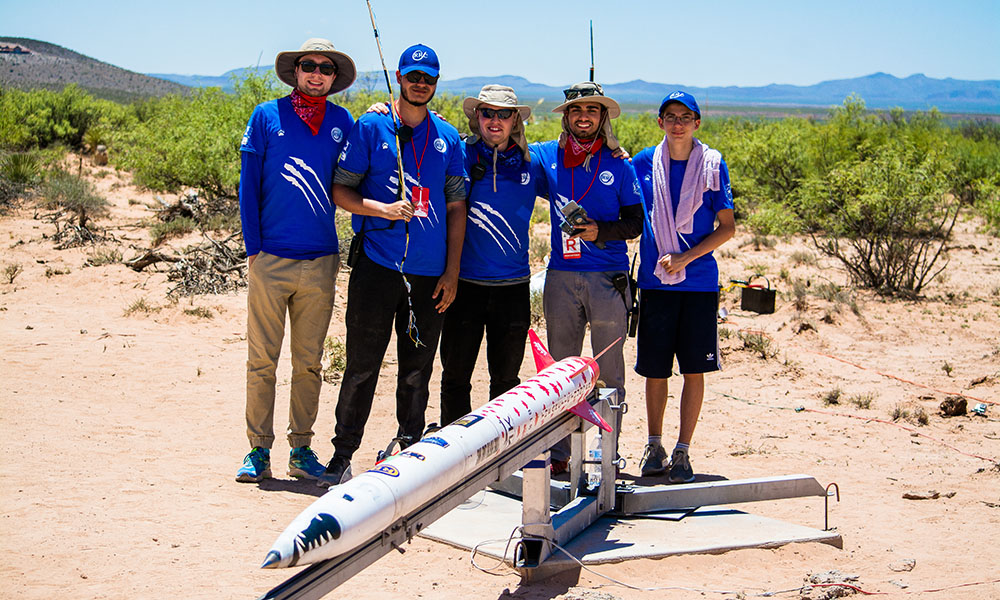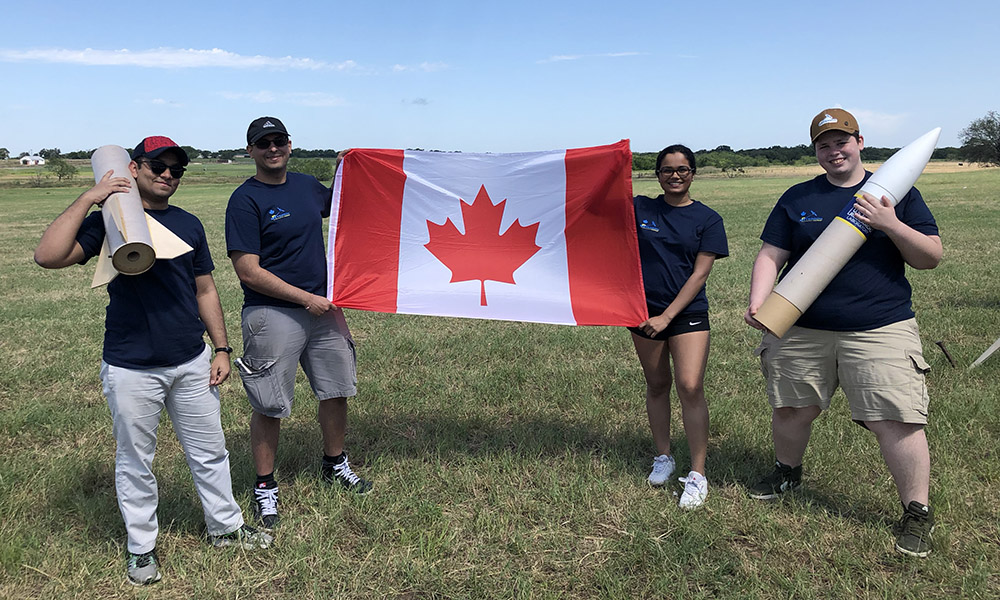Design teams contribute to the future of space technology
Students within the Faculty of Engineering and Architectural Science (FEAS) are making their mark on the aerospace industry with designs that aim to support the next generation of space technology.
Each year, FEAS teams compete in aerospace design competitions to create rovers, rockets and satellites that propel technology forward. The global competitions help students represent Ryerson on a global scale and present the opportunity to work with some of the biggest space institutions in the world, including NASA.
Participation in design teams allows students to expand their knowledge and build concrete skills that employers look for in co-op students and new graduates. Showcasing the finished projects also presents the opportunity to share FEAS’s success with the community and to inspire younger students to see a future for themselves in the aerospace industry.

The harsh conditions of space make it extremely difficult for astronauts to do even the simplest of tasks. For this reason, robotic technology plays a huge role in assisting with space exploration. Ryerson Rams Robotics (R3) is contributing to the development of robotic technology in the form of a Mars rover. Each year, the University Rover Challenge tasks students from across the world to create a rover prototype for a future manned mission to Mars. The rover must be able to communicate with a control team, navigate autonomously across harsh terrain and collect and analyze samples.
Gabe Casciano, systems team lead and fourth-year computer engineering student, said that developing technology to help explore the universe is essential for the success of humanity. “Earth has a finite amount of resources. In order to keep functioning as a society we need to take better care of the planet we are on and also look externally for alternatives to fossil fuels.” The rover team consists of students from multiple programs within FEAS and outside of the faculty. This summer, R3 took home second place at the competition in Utah, the team’s best result to date. Casciano said this diversity in expertise helps them solve problems in a creative and innovative way. “It's very easy to get each of the rover parts working independently. The real challenge is coming together as a team to make everything work in harmony.”

Each year, the Ryerson Rocketry team competes in the Spaceport America Cup, an event that challenges university students from across the world to demonstrate their skill and innovation in the field of rocket science. The team not only creates a rocket but also a system designed to transport a delicate payload into space. “When a rocket leaves Earth, everything inside is subjected to high levels of G-force, so we have to find some way to mitigate that,” said Mohi Khan, graduate aerospace engineering student and team captain.
This year, the team tackled this problem by creating their own magnetic dampening system. This technique uses magnetic fields to absorb G-forces and keep the rocket’s payload safe. Khan says the project allows students to use and build on the skills they learn in class and makes participants good candidates for internship and co-op opportunities within aerospace. The team brings together students from FEAS, other Ryerson faculties and even local high schools. “It’s really rewarding to be able to partner with younger students and to use our rocket for STEM outreach. People need to see that, although it is rocket science, it’s something that they can do and be successful at if they have a passion for it.”

Satellite technology is used for communication, weather forecasting, defence, environmental measurements and countless other functions that impact our everyday lives. The Ryerson CANSAT team works to simulate these functions, but with a challenging twist – the entire satellite must be the size of a can of soda. The tiny machine is carried into the air via a rocket and released at a high altitude. “As it comes down, our CanSat must be able to measure altitude, pressure, GPS location, temperature and other information that is then collected and analyzed by the team,” said Niha Shetty, a third-year computer engineering student and the electronics co-captain of the CANSAT team. A new challenge the team is working to tackle this year is air particle sampling. The data will reveal what is in the air and in what concentration, providing important information about pollution.
The challenge to fit all of these systems inside a soda can is something that reflects the future of satellite technology. Small satellites reduce costs and energy usage and minimize the amount of “space junk” once a satellite is phased out. Shetty is proud of the way the team collaborated to develop a satellite that could meet the new requirements and push the boundaries of what the team has done in previous years. “Building a functioning satellite is, of course, challenging, but overcoming those challenges is what makes it valuable.”